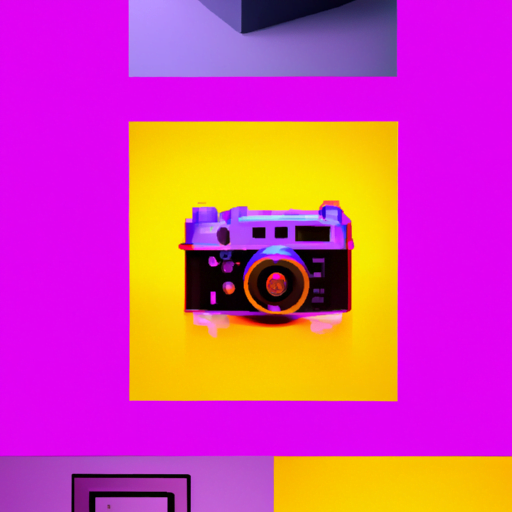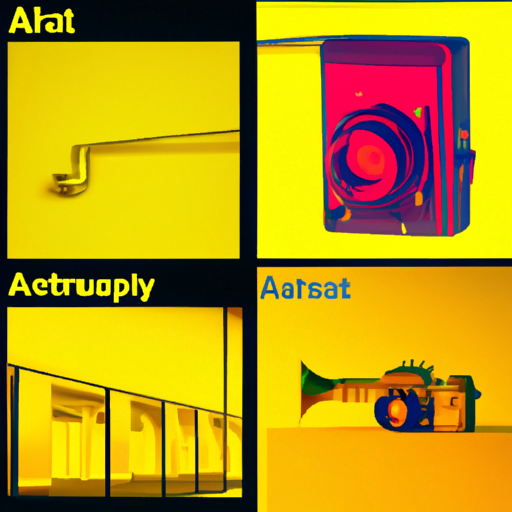
-
Table of Contents
- The Role of Surrealist Photography in Graphic Design
- 1. Understanding Surrealism
- 2. Key Elements of Surrealist Photography
- 3. Surrealist Photography in Graphic Design
- 3.1 Advertising
- 3.2 Album Covers
- 3.3 Editorial Design
- 4. Impact of Surrealist Photography on Graphic Design
- 4.1 Breaking conventions
- 4.2 Eliciting emotions
- 4.3 Sparking creativity
- 5. Conclusion
The Role of Surrealist Photography in Graphic Design

Surrealism is an artistic movement that emerged in the early 20th century, characterized by its exploration of the subconscious mind and the irrational aspects of human existence. Surrealist photography, a branch of surrealism, has played a significant role in shaping the world of graphic design. This article delves into the history of surrealism, explores the key elements of surrealist photography, and examines its impact on graphic design.
1. Understanding Surrealism
Surrealism originated in the 1920s as a literary and artistic movement led by André Breton. It aimed to liberate the mind from the constraints of rationality and explore the realm of dreams, the unconscious, and the irrational. Surrealists sought to challenge societal norms and conventions, embracing the power of the imagination and the subconscious.
Surrealism was heavily influenced by the psychoanalytic theories of Sigmund Freud, who believed that the unconscious mind played a crucial role in shaping human behavior. Surrealists sought to tap into this unconscious realm through their art, creating works that were often bizarre, dreamlike, and illogical.
2. Key Elements of Surrealist Photography
Surrealist photography shares many characteristics with other forms of surrealism. However, it has its own unique elements that distinguish it from other artistic mediums. Some key elements of surrealist photography include:
- Unusual juxtapositions: Surrealist photographers often combine unrelated objects or scenes to create unexpected and thought-provoking compositions. These juxtapositions challenge the viewer’s perception of reality and invite them to question the meaning behind the image.
- Distortion and manipulation: Surrealist photographers frequently employ techniques such as double exposure, photomontage, and image manipulation to distort reality and create a sense of ambiguity. These techniques allow them to convey the dreamlike quality that is characteristic of surrealism.
- Symbolism and metaphor: Surrealist photography often incorporates symbolic elements and metaphors to convey deeper meanings. These symbols may represent the artist’s subconscious desires, fears, or social commentary.
- Emphasis on the subconscious: Surrealist photographers aim to tap into the subconscious mind and explore the hidden depths of human psychology. They often draw inspiration from dreams, fantasies, and the irrational aspects of the human psyche.
3. Surrealist Photography in Graphic Design
The influence of surrealist photography on graphic design can be seen in various aspects of the field. From advertising to album covers, surrealism has left an indelible mark on the world of graphic design. Here are some examples of how surrealist photography has shaped graphic design:
3.1 Advertising
Surrealist photography has been widely used in advertising to create attention-grabbing and memorable campaigns. By incorporating surreal elements into their advertisements, brands can evoke emotions, spark curiosity, and leave a lasting impression on the audience. For example, the iconic “Got Milk?” campaign by the California Milk Processor Board featured surrealistic scenarios where people found themselves in absurd situations due to a lack of milk. This campaign successfully captured the attention of viewers and increased milk consumption.
3.2 Album Covers
Surrealist photography has also made its way into the world of music through album covers. Many musicians and bands have embraced surrealism as a way to visually represent their music and create a sense of intrigue. The cover art for Pink Floyd’s album “The Dark Side of the Moon” is a prime example of how surrealism can be used to create a visually captivating and thought-provoking design. The prism and the rainbow-colored light passing through it symbolize the band’s exploration of the human condition and the mysteries of the universe.
3.3 Editorial Design
Surrealist photography has found its place in editorial design, particularly in magazines and book covers. By incorporating surrealistic elements into their designs, graphic designers can create visually striking compositions that capture the reader’s attention and convey the essence of the content. For instance, the cover of Salvador Dalí’s autobiography, “The Secret Life of Salvador Dalí,” features a photograph of the artist with his face obscured by a snail. This surreal image reflects Dalí’s eccentric personality and his fascination with the subconscious.
4. Impact of Surrealist Photography on Graphic Design
The incorporation of surrealist photography into graphic design has had a profound impact on the field. Here are some key ways in which surrealist photography has influenced graphic design:
4.1 Breaking conventions
Surrealist photography challenges traditional design conventions by encouraging designers to think outside the box and embrace unconventional ideas. By breaking free from the constraints of reality, designers can create innovative and visually captivating designs that capture the viewer’s attention.
4.2 Eliciting emotions
Surrealist photography has the power to evoke strong emotions and create a lasting impact on the viewer. By tapping into the subconscious mind and exploring the irrational aspects of human existence, designers can create designs that resonate with the audience on a deeper level.
4.3 Sparking creativity
Surrealist photography serves as a source of inspiration for graphic designers, sparking their creativity and encouraging them to think beyond the boundaries of traditional design. By studying the works of surrealist photographers, designers can explore new techniques, experiment with unconventional compositions, and push the boundaries of their own creativity.
5. Conclusion
Surrealist photography has played a significant role in shaping the world of graphic design. By embracing the irrational, the subconscious, and the dreamlike, surrealist photographers have challenged traditional design conventions and opened up new possibilities for graphic designers. The influence of surrealist photography can be seen in various aspects of graphic design, from advertising to album covers, and it continues to inspire designers to think outside the box and create visually captivating designs. As the field of graphic design evolves, the impact of surrealist photography is likely to continue shaping its future.
